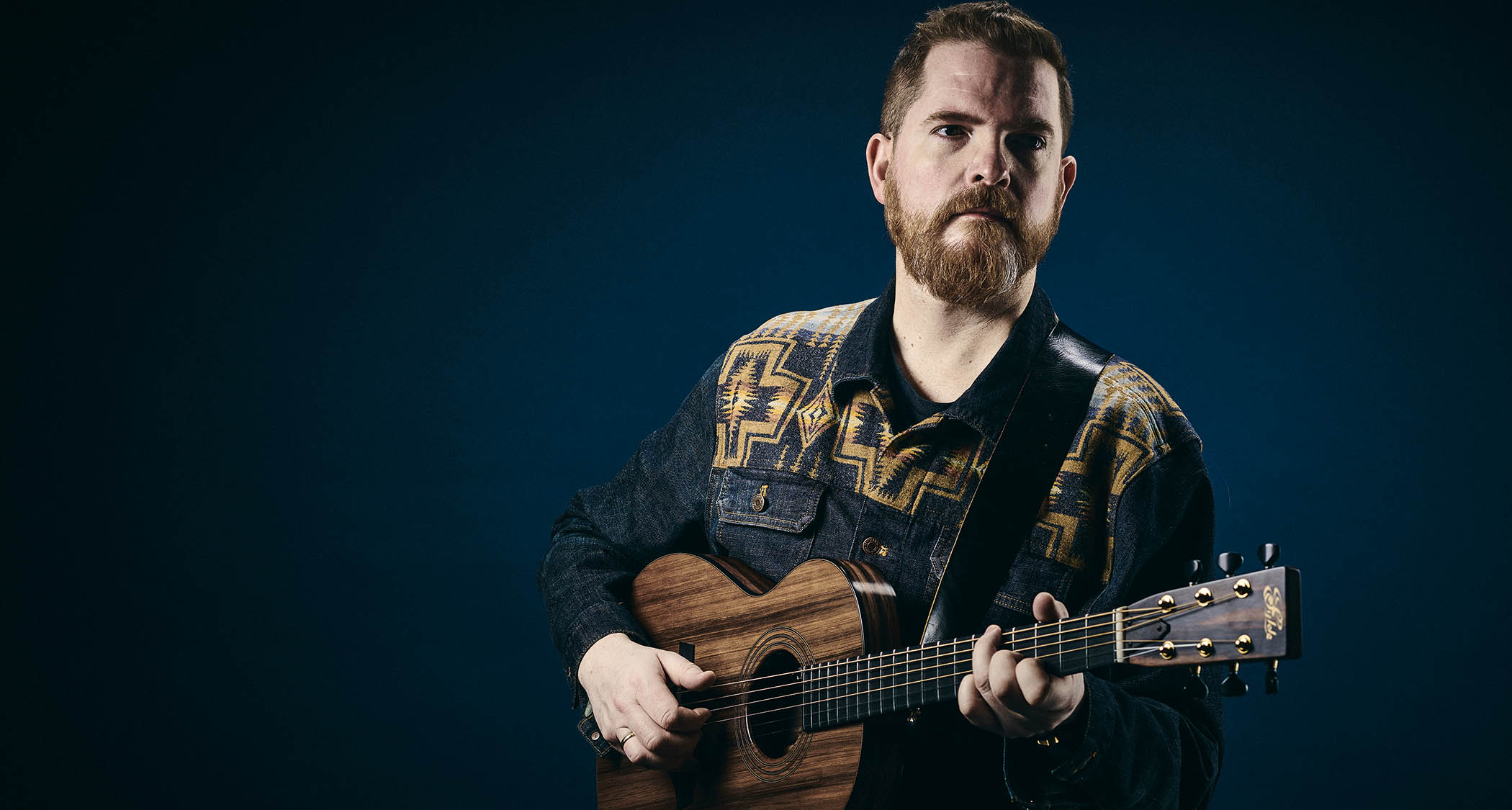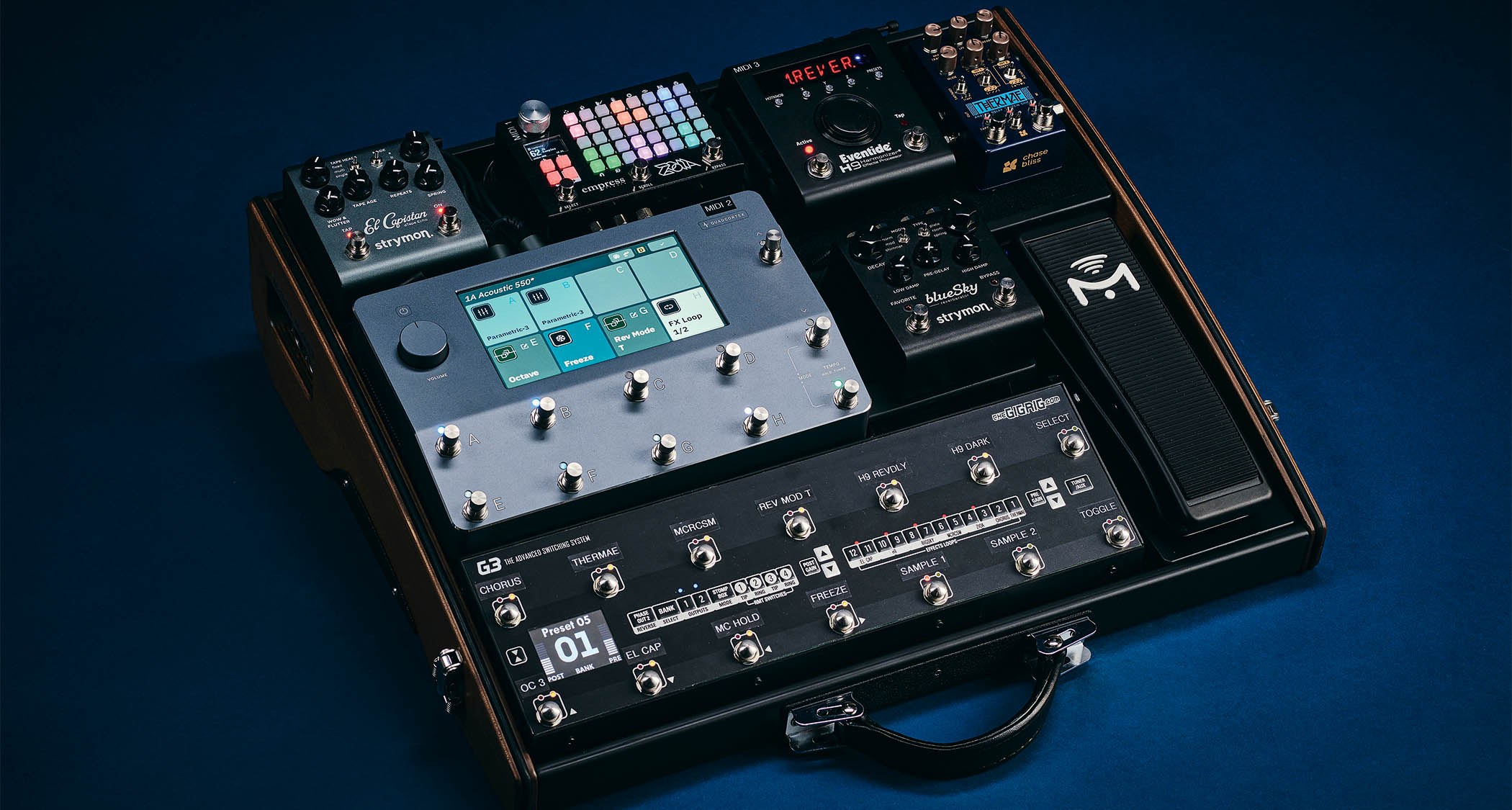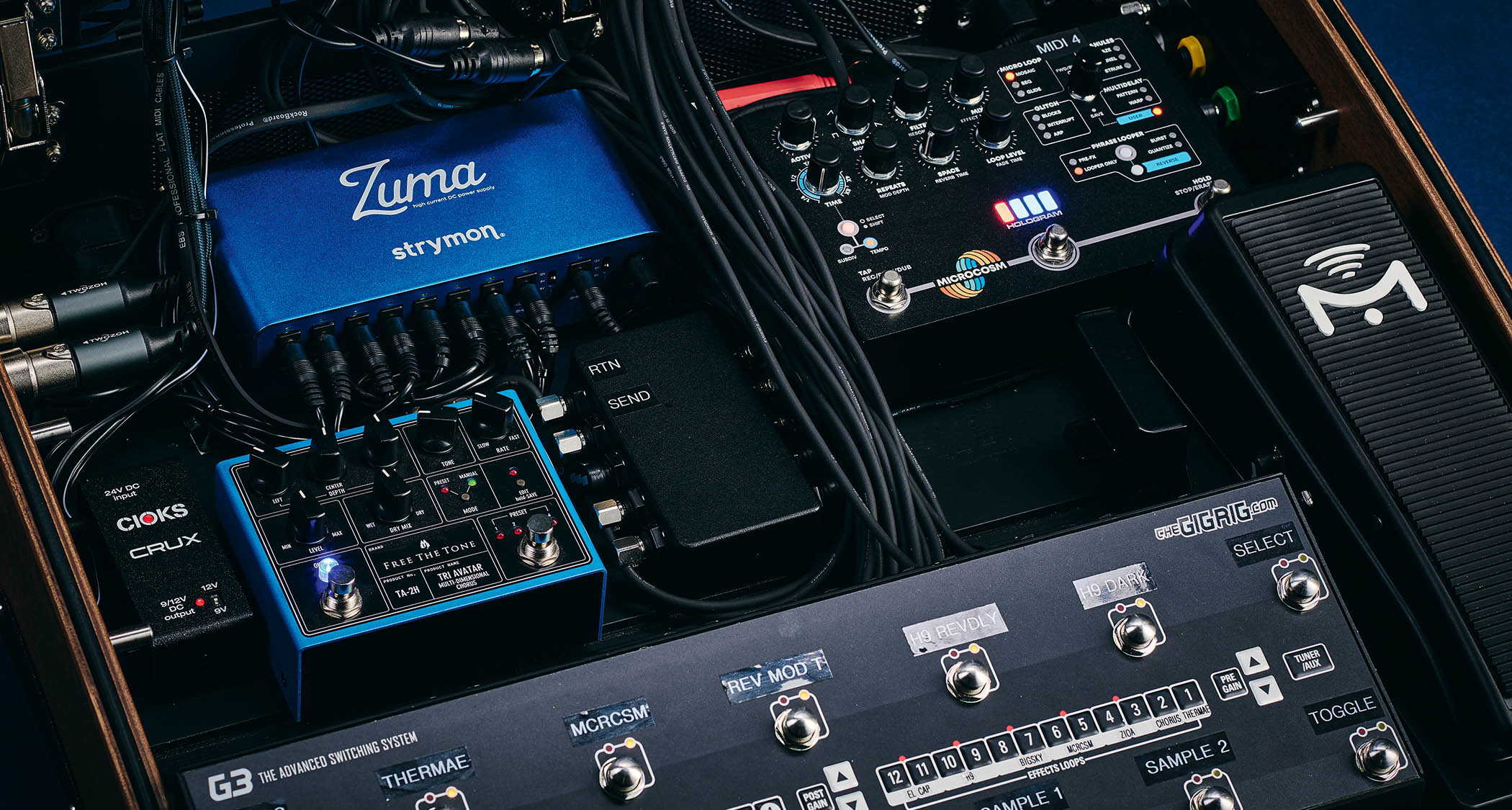“All those riffs came out with the Mulecaster. An amazing instrument that weighs a ton but sounds utterly timeless and three dimensional”: Folk great John Smith on his life-changing Mulecaster experience and why the Quad Cortex isn’t just for metalheads
As the influential UK folk guitarist gears up to take his new album, The Living Kind, out on the road, he joins us to explain how a shift in his gear and writing process has had a profound effect on his music

It’s a case of all change for John Smith, the UK acoustic specialist once hailed as the future of folk music by Pentangle’s John Renbourn.
Not only has he just released a brand-new album, he’s also reorganised his touring gear to include a specially designed thinline Fylde electro-acoustic as a one-size-fits-all solution for his acoustic repertoire. But there’s also a custom electric guitar joining the party, as well as an effects array more associated with a metal act. What the heck is going on?
The new album, The Living Kind, is very band-orientated, but John is still planning to tour the material as a one-man unit.
“So that my solo show is not just me and an acoustic guitar, like it used to be, I’m trying to make it much more three-dimensional: stereo effects, very tasty pedals,” he tells us during his visit to Guitarist HQ. “The long and short of it is taking a band on the road is hard and expensive. I think I can do this. Well, I’m gonna try…”
What were the origins of the new album?
“Back in 2011, I met [The Living Kind producer] Joe Henry for the first time. I’d been drafted in to play guitar on Passenger by Lisa Hannigan and over the course of that album [produced by Joe Henry], Joe and I became good friends. Since then he’s been a brother, a mentor and a very significant influence in my musical life. I’ve always wanted to make a record with him, and just after lockdown lifted back in 2022, I was on tour in the States, so I stopped in with Joe.
“After dinner one night, we sat by the fire and wrote this song called Lily, then went upstairs and demoed it. He said, ‘You know, there’s no reason why we can’t make a record in here.’ He has a music room above his garage; it’s not a studio, it’s just a playing and writing room that is subject to the elements. If a truck goes past outside, you hear it. But we were in the middle of winter and there were no trucks outside, there was just cold and snow and a very dead sound. He said, ‘If you can write a record, just do it.’
Get The Pick Newsletter
All the latest guitar news, interviews, lessons, reviews, deals and more, direct to your inbox!
I wrote the songs and they just kind of came out. It was like as soon as you turned on the tap, or you put up your antenna or whatever, the songs started flowing
“One of Joe’s magic tricks is to get people and make them feel very natural in the studio, so they’re able just to express themselves; I’ve always been excited about trying that with him. So I wrote the songs and they just kind of came out. It was like as soon as you turned on the tap, or you put up your antenna or whatever, the songs started flowing. I went into the studio with about 20 songs and we chiselled it down to 12, and 10 went on the record.”
That sounds like a very positive and speedy process.
“All the songs were really fresh, really felt very potent in my mind, because some of them I’d only played three or four times. But I went in pretty well rehearsed. And then as we played through things and listened to them, Joe would say, ‘Well, why don’t you try it on that guitar?’ or ‘Why don’t you just try singing it and pick up the guitar in a second?’
“So he was steering the ship and I was just on the deck, singing and playing. I realised what was happening, he was producing me, but it felt like I was just playing and singing, quite carefree, while he was guiding things towards the destination.”
How did you recruit the other players on the album?
“I’d never met the bass player, never played with him before. He’s Ross Gallagher; he was Paula Cole’s bass player. He’s based in New York and he’d driven up with Joe’s son Levon who’s a great sax and clarinet player and he plays with Julian Lage. Ross and I cut the songs live.
“Joe said, ‘Why don’t you guys try playing Dividing Line?’ I think that was the first one we did and we played through it and Joe said, ‘That’s the take.’ Ross was very instinctively following me around and dancing with me in a way that it’s taken me years to establish with bass players in the past.”
“So then I overdubbed some guitars and Levon would open up his clarinets and saxophones and, when we had the bare bones of the record, we sent it out to Jay Bellerose in Los Angeles, who is Robert Plant’s drummer.
All those riffs that are on the record came out with the Mulecaster in the first eight weeks of owning it. An amazing instrument that weighs a ton but sounds utterly timeless and three dimensional
“Patrick Warren [keyboards and strings] I know through playing with Joe, but Patrick has played with everyone; Joshua Van Tassel [drums, percussion] up in Toronto, he plays with Donovan Woods, he put down some drums on the track Candle. So then we had a pretty complete picture.
“I didn’t write a lot of string arrangements because it felt like the songs had really come through quite a journey in the four days that we’d recorded them. So I just sent a couple to Patrick and said, ‘Look, if you have any ideas for potential strings, put them on here.’
“In four days we’d cut the record, and in two days of remote recording it was complete. It happened very quickly and very naturally in a pure burst of creativity. Totally amazing to me that it happened like that.”
There’s a distinct shift towards you playing more electric guitar on this album. How did that come about?
“In a word: Mule. Matt Eich, in Saginaw, Michigan, builds these incredible guitars out of steel. I knew he existed because we had spoken in 2017 when I was promoting Headlong in Seattle. He wrote to me and said, ‘Hey, man, just to let you know, I really love what you do. And I built these Resophonic guitars…’ I wrote back and said, ‘I know who you are because of Kelly Joe Phelps.’
“You know, my hero and friend Kelly Joe played a Mule so I knew of this amazing guitar on [Kelly Joe Phelps’] Brother Sinner And The Whale. Later on, I found out through watching Joey Landreth that Matt had started building electric guitars. And then I learned about this Mavis guitar that he was building. I said I’d love to try a Mavis and he sent me one and I wrote a bunch of songs. It’s an instrument where songs just fall out of it, you know?”
I’m independent, I don’t have a crew, I don’t have a guitar tech. When I’m in the UK and I’ve got my car, I’ll take three or four guitars out with me. When I’m in the US, I generally take one
“Maybe six months later I wrote to him and said, ‘Look, I’m in love with this thing. I need one of your electric hollowbodies.’ I was going back to the States and I picked up the Mulecaster. I got it home and something different started happening.
“Whereas I’d written a bunch of songs on the Mavis and I thought I was going to make a record on the Mavis, I actually parked a lot of that material because the stuff that started coming out of the Mulecaster felt even more relevant to what I wanted to say for this new record.
“All those riffs that are on the record came out with the Mulecaster in the first eight weeks of owning it. An amazing instrument that weighs a ton but sounds utterly timeless and three dimensional. So half the record came with that, the other half I recorded on my Fylde Falstaff, the guitar that I’ve used on every record I’ve made since 2009.”
Touring with multiple guitars is always a problem when you’re a soloist. Was your new Fylde ‘Smithcaster’ acoustic a way of getting around the problem?
“Yeah, it’s a problem. I’m independent, I don’t have a crew, I don’t have a guitar tech. When I’m in the UK and I’ve got my car, I’ll take three or four guitars out with me. When I’m in the US, I generally take one.
“I was talking to Roger Bucknall about how to get around this and I’ve been keeping my eye on thinline acoustic guitars and the development of that kind of instrument by some of the bigger manufacturers and wondering how it can be done in a way that suits my sound.
Roger and I developed this idea of a thinline acoustic guitar that still has a microphone inside so that I can hit it and get that bass drum hit and get the air moving around the sound
“Roger and I developed this idea of a thinline acoustic guitar that still has a microphone inside so that I can hit it and get that bass drum hit and get the air moving around the sound – I can’t stand just a piezo signal. So we put my stereo LR Baggs pickup in this guitar – half piezo, half mic, take all the treble out of the piezo, some of the bass off the mic – and between those two things, you get what sounds almost like an acoustic guitar.
“The idea now is that I can travel with my Mulecaster and my thinline Fylde in a double gigbag, and then go fly. We’re going to America in a couple of weeks to try this idea out and see if I can play my whole gig on those two guitars.”

Have you added to your pedalboard in order to tour the new album?
“The main ’board is housed in this Schmidt Array that’s actually been built for me to my specification, which is amazing. I’ve got all of my effects on there, all wired up by The GigRig. It’s the mothership, housed in this beautiful handmade timber ’board by Schmidt Array in Germany. I’ll also probably take my Benson Nathan amp on the road as well because I just love the sound of that thing.
“Meanwhile, I’ve managed to condense my travel ’board into two pedals. Thanks to Neural DSP I’ve got a Quad Cortex, on which I’ve managed to approximate the [Strymon] BlueSky and the El Capitan. It’s got EQs, so I can mix my pickups and do all my signal routing off one guitar cable for my acoustic and my electric.
“So the four or five pedals I used to have to take on a ’board that weighed a ton now fit in a suitcase. It’s now just all on the Quad Cortex, which is a total revelation. I’ve only seen it used by metalheads previously, but then Jenn Butterworth, the great trad guitar player, explained she had started using it just for acoustic work and it got me thinking…

“I spoke to Neural and it seems that actually I could put my rig just on that one unit. So I’ve got that and an expression pedal, and I can approximate much of my bigger ’board, my UK pedalboard, just on a little 18-inch Templeboards fly rig.”
- The Living Kind is out now via Commoner/Thirty Tigers.
With over 30 years’ experience writing for guitar magazines, including at one time occupying the role of editor for Guitarist and Guitar Techniques, David is also the best-selling author of a number of guitar books for Sanctuary Publishing, Music Sales, Mel Bay and Hal Leonard. As a player he has performed with blues sax legend Dick Heckstall-Smith, played rock ’n’ roll in Marty Wilde’s band, duetted with Martin Taylor and taken part in charity gigs backing Gary Moore, Bernie Marsden and Robbie McIntosh, among others. An avid composer of acoustic guitar instrumentals, he has released two acclaimed albums, Nocturnal and Arboretum.
“It combines unique aesthetics with modern playability and impressive tone, creating a Firebird unlike any I’ve had the pleasure of playing before”: Gibson Firebird Platypus review
“This would make for the perfect first guitar for any style of player whether they’re trying to imitate John Mayer or John Petrucci”: Mooer MSC10 Pro review










